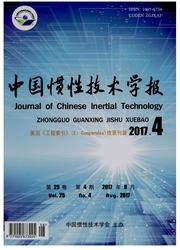

 中文摘要:
中文摘要:
重力场辅助水下导航技术作为一种新的无源导航手段受到各个国家的重视,并逐渐成为研究的热点,但目前的大部分研究主要基于匹配算法和系统总体框架的仿真设计,对于重力实测数据的获取过程和精度缺乏讨论。从工程实用角度出发,对重力场辅助水下导航中的实测重力的数据归算过程进行了详细分析,明确了海洋潮汐和海面地形的计算精度是决定水下重力归算精度的主要因素。鉴于海洋潮汐和海面地形的复杂性,针对潮汐和海面地形在浅海和深海的不同特点,提出了对海域进行分区计算的设想,计算结果证明了该方法用于水下实测重力数据归算的可行性。
 英文摘要:
英文摘要:
As a new passive navigation technology, the gravity-aided underwater navigation has been the hotspot of research. But the main research is always focused on the matching arithmetic and system framework simulation, while the process and precision of gravity data acquisition is rarely discussed. In view of engineering utility, the paper analyzes the underwater gravity reduction technology in the gravity-aided navigation in detail, and it shows that the sea tide and sea surface topography (SST) are the two main effective factors. Considering of the complexity of sea tide and SST, a calculation idea of divided sea area is brought out. The results show that it is feasible and can be used for the underwater gravity reduction area.
 同期刊论文项目
同期刊论文项目
 同项目期刊论文
同项目期刊论文
 期刊信息
期刊信息
